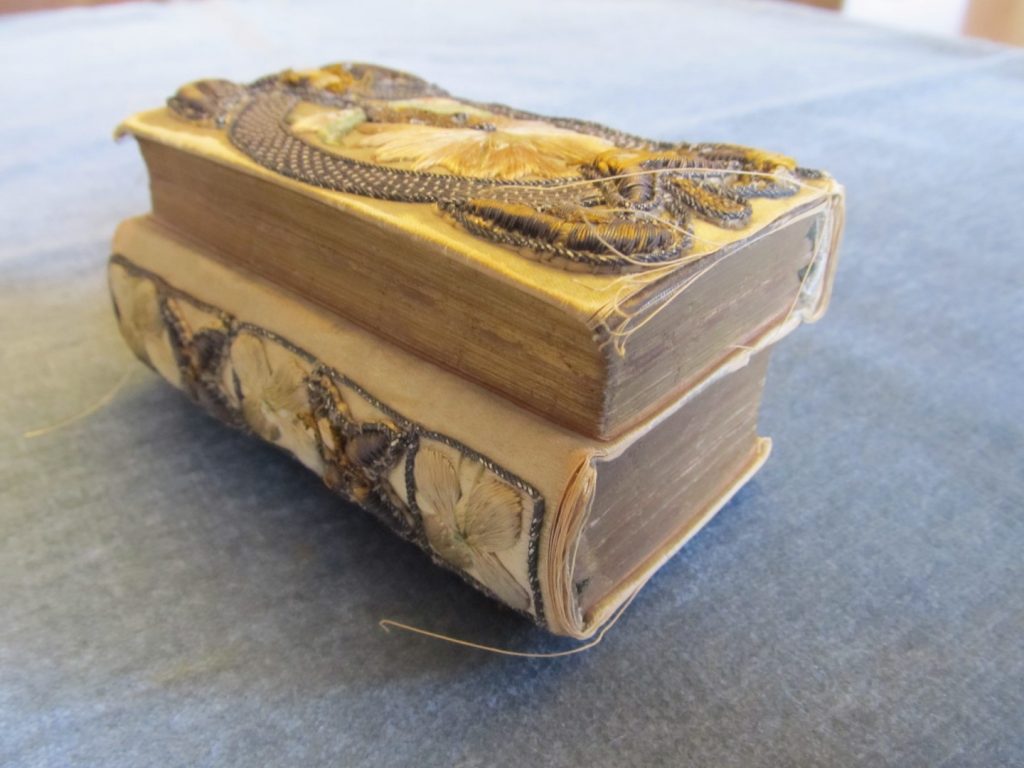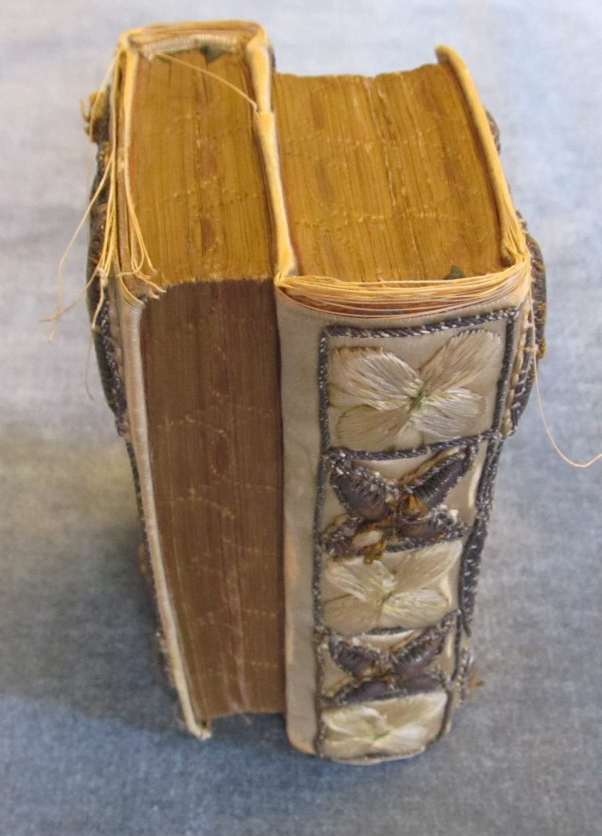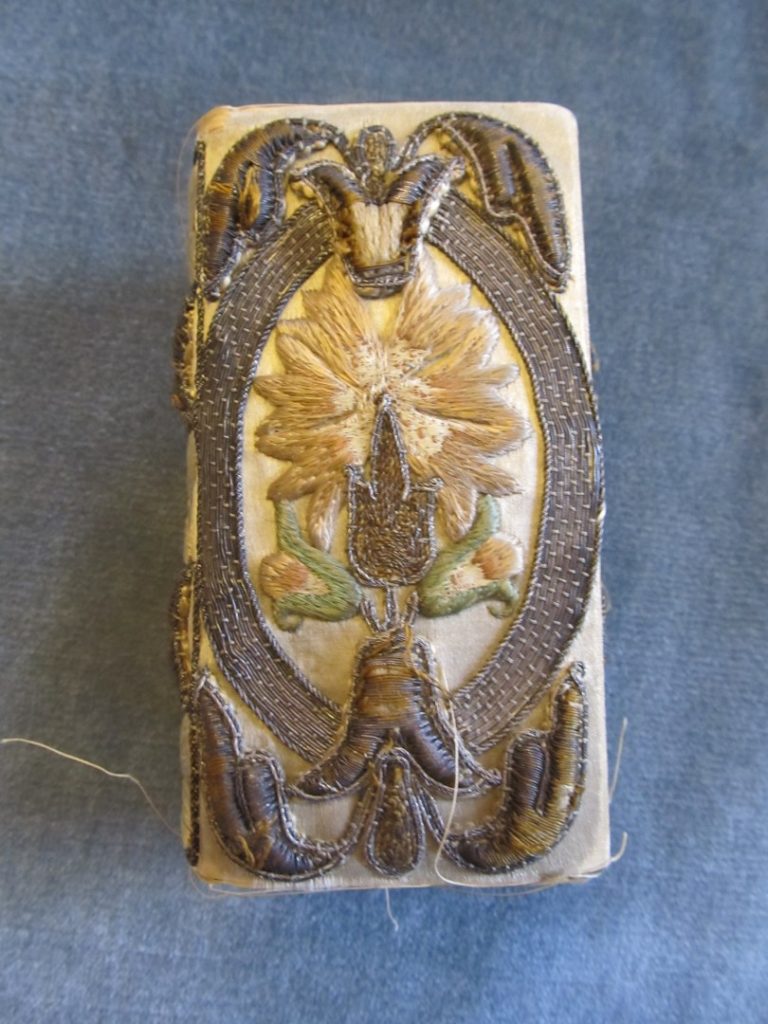The books in the Rosenbach’s collection are fascinating for many different reasons, but this little gem has one of my favorite bindings. It is actually two separate texts bound together in what is known as a dos-a-dos binding.

Dos-a-dos means “back to back” in French and that is exactly what this type of binding is. The two volumes are bound back-to-back, with the spines facing opposite directions and a shared board between them. (Interestingly, the French actually use the term “les reliures jumelles” for this type of work–jumelles means “twins”)

Glaister’s Glossary of the Book explains that “A typical pair of books linked in this way was the New Testament and the Prayer Book with Psalms, probably because since they were needed together in Church.” Ours is, in fact, a 1628 New Testament bound with a 1629 Book of Common Prayer. Glaister also notes that this unusual style reached the height of its popularity in England from 1600 to 1640; again, our example fits neatly into this range.

In addition to its interesting form, the book’s embroidered covers are simply beautiful objects. According to ABC for Book Collectors, the fashion for embroidered bindings also reached its peak in the first half of the the 17th century. Ours has the same stylized floral design, executed in silk and metallic threads, on both sides. If embroidered bindings pique your interest, The Folger’s “Collation” blog had a great post a while back about some theirs, including one with a scene of David holding the severed head of Goliath.
